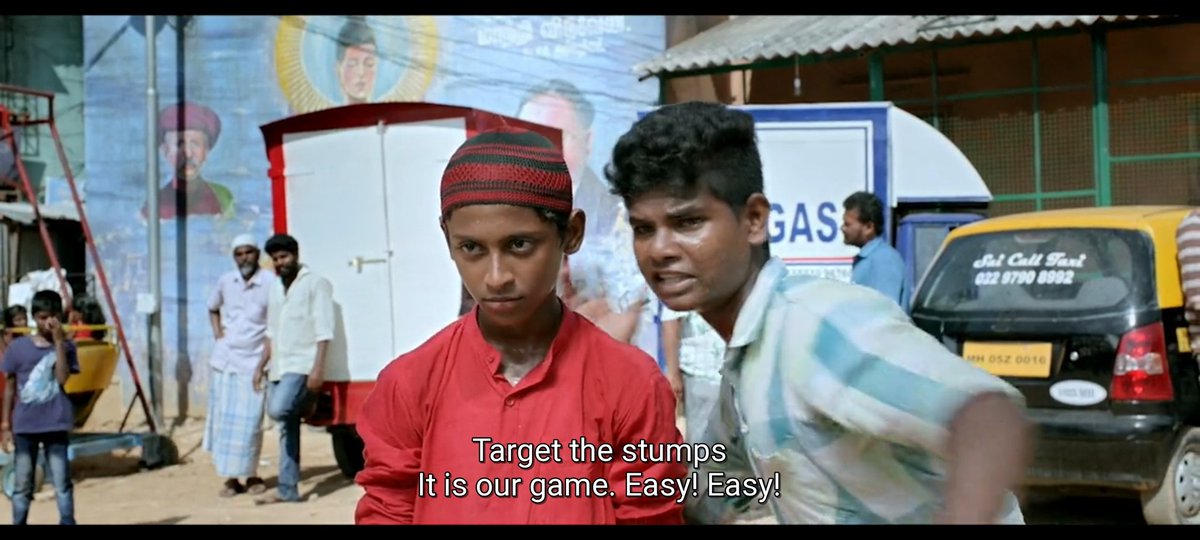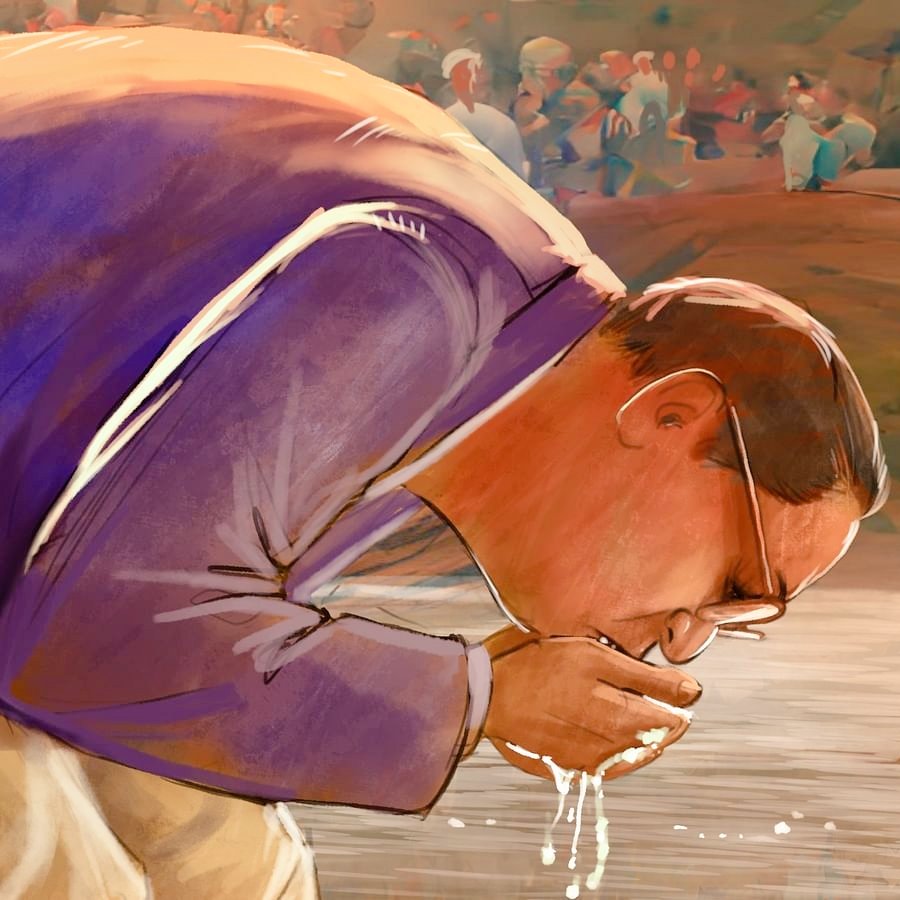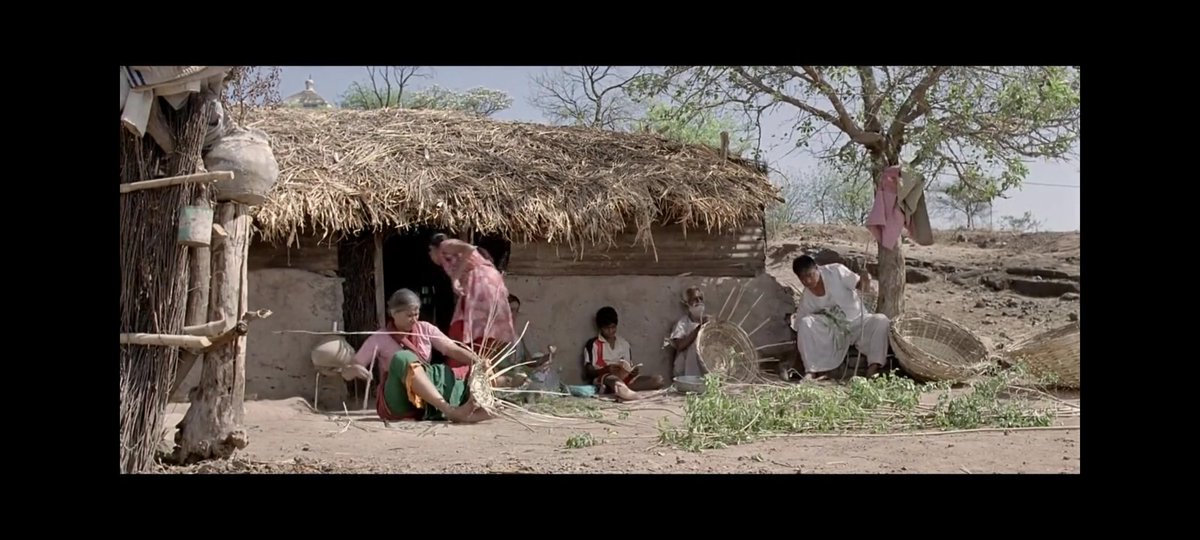Get ready for an immersive review of thread as I unravel the captivating layers of #Kaala. 🧵
From its stellar cast to its impactful storytelling, layered metaphors and brilliant symbolism, this thread will delve deep into the heart of the film and mind of the director @beemji.
From its stellar cast to its impactful storytelling, layered metaphors and brilliant symbolism, this thread will delve deep into the heart of the film and mind of the director @beemji.

The film begins with an animated explanation of the significance of land in human civilization. Humans transformed forest land into agricultural land for sustenance. This land became their deity, a religious and caste ritual. It represented power, leading to battles both in myths… twitter.com/i/web/status/1… 







Marginalized communities residing in Dharavi, without any land ownership. A political party aims to demolish their huts and construct apartments under the "Pure Mumbai" initiative. The residents of Dharavi are protesting this action, spearheading the "Arise" movement. 







In Dharavi's slum, the frame highlights the unity between Muslims and Dalits. A wall in the background displays paintings of Mahatma Jotiba Phule, Gautam Buddha, and Babasaheb Ambedkar. 

In this scene, there is a reference to Kaala's son named Lenin (name inspired from the Marxist revolutionary Vladimir Lenin). The frame also showcases a Buddha Vihar within the slum. 

Kaala asserts that his community possesses a profound understanding of both respecting and challenging laws. They acknowledge the significance of abiding by laws, but are also well aware of how to resist and defy oppressive laws when they oppress and subjugate them. 

Eshwari Rao, the actress who portrayed Kaala's wife, shines as a powerhouse in the film. Her character is consistently brilliant, displaying remarkable boldness & intelligence. This particular dialogue effectively captures the essence of her character. 







Experience a collection of exquisite frames featuring the paintings and statues of Mahatma Jotiba Phule, Gautam Buddha, Babasaheb Ambedkar and Periyar. 

In most movies, it's a challenge to find a powerful Muslim woman character. However, in Kaala, we encounter Zareena, an African return Muslim girl who once lived in Dharavi and now returns to uplift the slums. As she seeks the people's demands, a young man expresses his desire. 

The name of the company that is trying to demolish the slum and rebuild is "Manu Realty".
You know what MANU symbolises here.
You know what MANU symbolises here.

Here is an argument between Kaala and Zareena over who should do the reconstruction of welfare work in slums. Kaala argues it is the duty of government, while African return zareena asks " should the govt. do everything?" 

In this particular scene, we witness a heated confrontation between Kaala, the father, and his son Lenin. This powerful moment also serves as a portrayal of the significant flaws within Marxist politics in India. 

Mere white attire is insufficient.
The antagonist went to Kaala's house but did not even have a sip of water because of the caste location of Kaala (whom he consider inferior)
The antagonist went to Kaala's house but did not even have a sip of water because of the caste location of Kaala (whom he consider inferior)

Haridev Aviyankar, the movie's antagonist and a Brahmin, arrives in Dharavi to meet Kaala after a politician from his party kills a slum resident who had a close connection with Kaala. This event leads to confrontations between Kaala and Haridev Aviyankar. The Dharavi residents… twitter.com/i/web/status/1… 

The antagonist considers himself Rama and considers the protagonist (Kaala) Ravana. If we look at it from Dalit -Adivasi Prospective, then we can find many places and communities who consider Ravana as their ancestor and believe that Ravana never did anything wrong. He kidnapped… twitter.com/i/web/status/1… 

This serves as a reminder and a powerful lesson for those who desire to live in luxury while disregarding the plight of their own community, leaving them trapped in poverty & oppression. 

Kaala explaining the importance of education in this scene to the police constable whose name is "Shivaji Rao Gaikwad".
The name is combination of "Shivaji and Sayajirao Gaekwad"
The name is combination of "Shivaji and Sayajirao Gaekwad"

The movie delves into a multitude of recent political happenings. This includes the current government's act of equating resistance with anti-Nationalism, as well as politicians orchestrating Hindu-Muslim riots to initiate communal disharmony.
This deliberate choice challenges the traditional association of dark colors with negative characters and light colors with positive ones. By subverting these expectations, @beemji sends a powerful message, highlighting that appearances can be deceiving and that one's clothing… twitter.com/i/web/status/1… 

Once again, the director @beemji draws a parallel between Kaala and Ravana. In this particular scene, the director metaphorically compares Kaala to Ravana by referencing the legend of Rama attempting to decapitate Ravana, only to have another head emerge in its place. Similarly,… twitter.com/i/web/status/1… 

3 colours in the climax to represent the 3 revolutionaries
1 - Black colour for Periyar
2- Red colour for Karl Marx
3- Blue Colour for Babasaheb Ambedkar
1 - Black colour for Periyar
2- Red colour for Karl Marx
3- Blue Colour for Babasaheb Ambedkar

A gripping cinematic masterpiece that seamlessly blends powerful storytelling, exceptional performances, and social commentary. Rajinikanth's commanding presence, coupled with director Pa. Ranjith's vision, delivers an unforgettable experience.
Leave your comments below.
Leave your comments below.

• • •
Missing some Tweet in this thread? You can try to
force a refresh


















